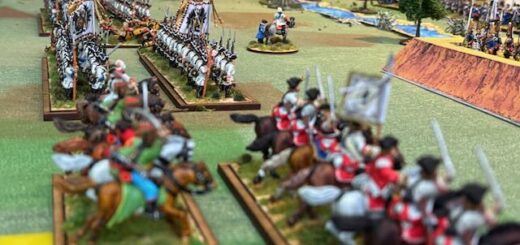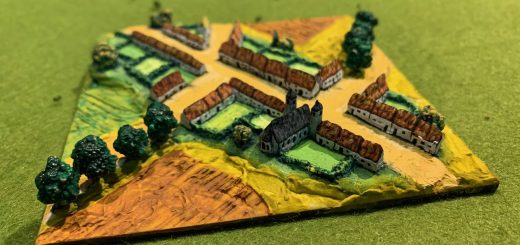VLB GUI
Modifications proposed
Dear all, here I will post a list of bug solved and modification proposals coming from play testers for next version. What I would like to introduce is the following:
- Introduce Changes Of Situation (COS) in the program. I have been digging into the blue book and found that most of the COSs are caused by events which are already controlled by the program. Some COS’s that need to be introduced by hand is enemy seen and the like. My idea is that whenever a unit is subject to a COS, all commanders up in the chain are informed. A commander who has a view of the COS can react promptly, otherwise the distance to the commander is established and an automatic message is sent. A commander has thus a time window, of let us say 10 minutes to react to his own COS or when he receives the message of a COS happenignto a subordinate.
In this way only units and commander who have and active COS can send messengers or issue verbal orders like change of formation, halt. - I am thinking of some way to limit artillery bombardments. This can be just decided or we may think of a “physical” reason to interrupt a bombardment, like smoke limiting visibility of tired gunners.
- I would like to use the system to handle army maneuvers close to the battlefield. I am thinking of assigning fatigue du to movement, like -1 point every hour. In this way poor troops can endure less hours of movement. IS this right or should I assign a fraction of the full combat value every hour, to have every unit fatigued after let us say 8 hours of movement?
For Playtesters
If you want to launch this program remotely, please follow this link and enjoy!
Here is the unit labels for you to use. It is produced by the program and contains all Austrian and French units for the campaign of Italy.
Playtesters who are willing to follow a step by step battle example, please follow this link to the Battle of Lonato, 3rd August 1796.
Initial description
Here is a description of the VLB graphical interface I am building for my next battle test.
This is the main program window, containing all actions you can do during a battle.
You first need to open a file containing the description of the battle, units, current unit status, fires, melees.
You are able to save whenever you need the status of the battle, in any case a backup is done every some time, just in case.
This is famous battle clock, to which all events in the battle are synchronized. It shows the battle time in the analog clock, and the real time just below. Its main use is to check that the program is really running.
Here is the command chain description. You may choose the side, and by clicking on a unit its status is shown. You don’t get all unit details, but just the bit a napoleonic commander would know.
Here is an example of the status dialog that pops up when you click on the general Massena. Napoleon has not given any order to him yet!
Here is the log window, you may choose a number of logging types. In this example you want to see all units currently moving.
Here is the orders window. You select the sender and the receiver. In this example the General de Brigade Rampon was chosen. All elements that can be subject to orders or simple info messages are shown in blue.
If you send an order, you need to detail the formation that the unit will adopt while executing the order, and its final formation.
You are allowed to send a single order to multiple recipients, by checking the propagate order checkbox..
Here is the verbal order window. Normally orders are sent via messengers, but you are allowed to issue verbal orders by brigade commanders, or other generals, if needed, to react to a COS.
When you decide that all orders and fires and melees are created at a given battle time, you may use this window to scroll for events happening. You decide at which event to stop, or you may advance by e given time amount.
If melees appear, like in this case, the combat resolution is called and melees are solved.
The battle clock shows in green the time when you started looking at events, while in black is shown the time of latest event. The time difference between these two values is used to calculate movements, see next picture.
Here is the movement window that pops up when you decide to synchronize your battle time with latest event processed.
After movement you may start again with new fires and melees.
In the following picture a fire can be chosen, possible firers are all unlimbered batteries, potential targets are all Austrians units, but not generals.
Here a melee can be initiated. You may choose between four possible melee types.
- standard melee, where infantry and cavalry units, and generals may participate
- skirmishers clashes, only skirmishers may participate
- bridge crossings, where artillery may support the attack and defense
- melees on broken ground, where skirmishers may try to contest the ground.
There is also utility which can be used to evaluate the time needed to cross a given ground length. My idea is to use it to implement specific messages, called key events, that can popup during the battle and cause an action.
For example, a key event could be generated and popup when a brigade reaches enemy long artillery range, and another one when reaches melee distance.
There is also a tool to estimate the distance that can be covered by the various unit types in a given amount of time. Useful I hope!
Here is the battle rumors window. The only one giving the current estimated status of a unit. The estimation is given in real time by staff officers and unit officers, can be grossly under or overestimated!



